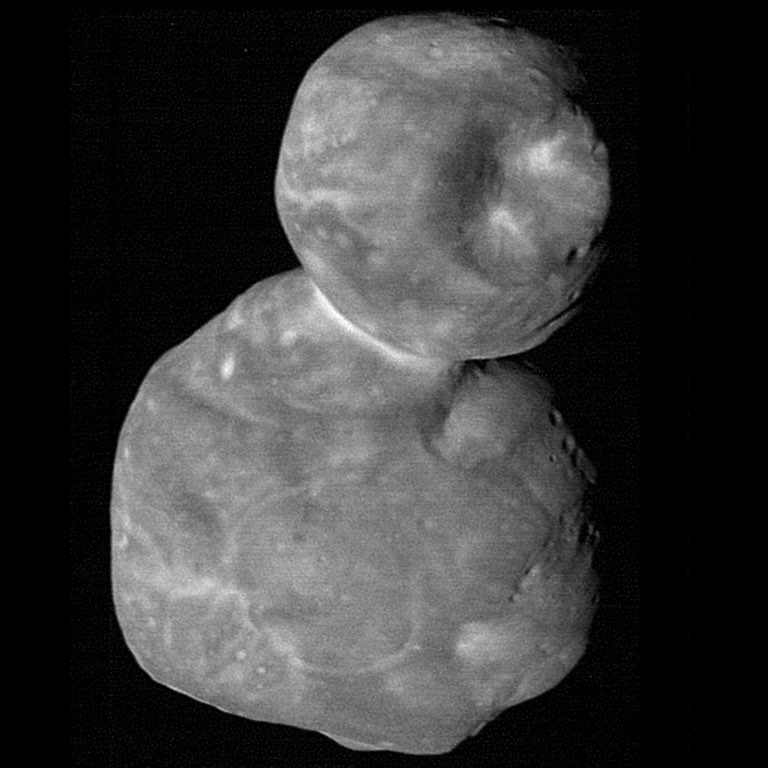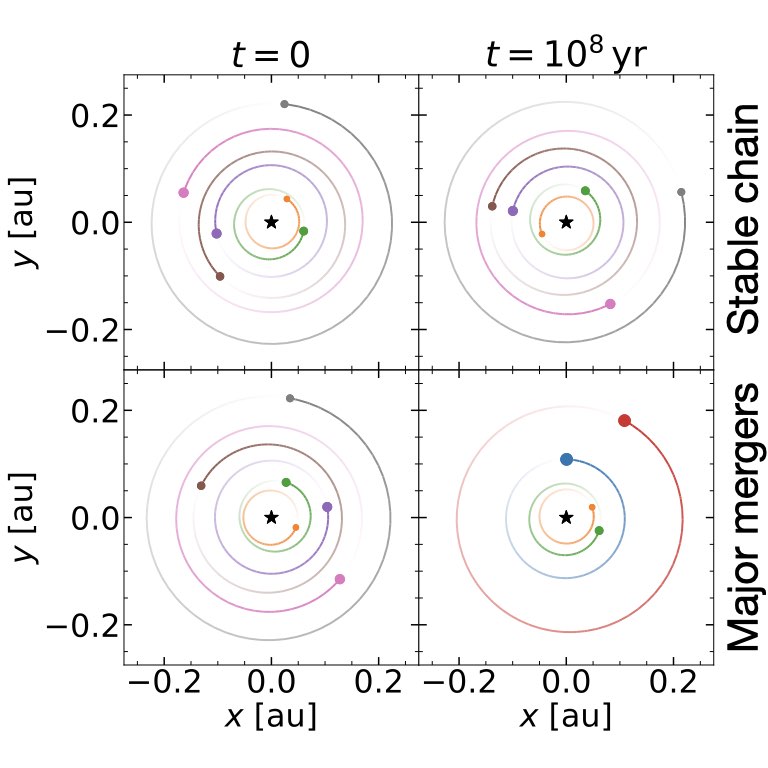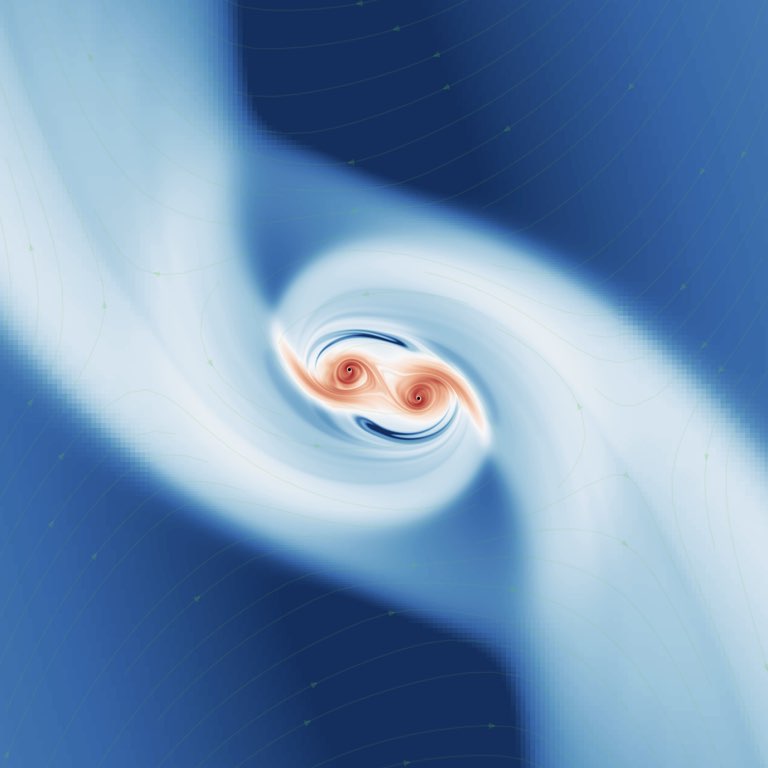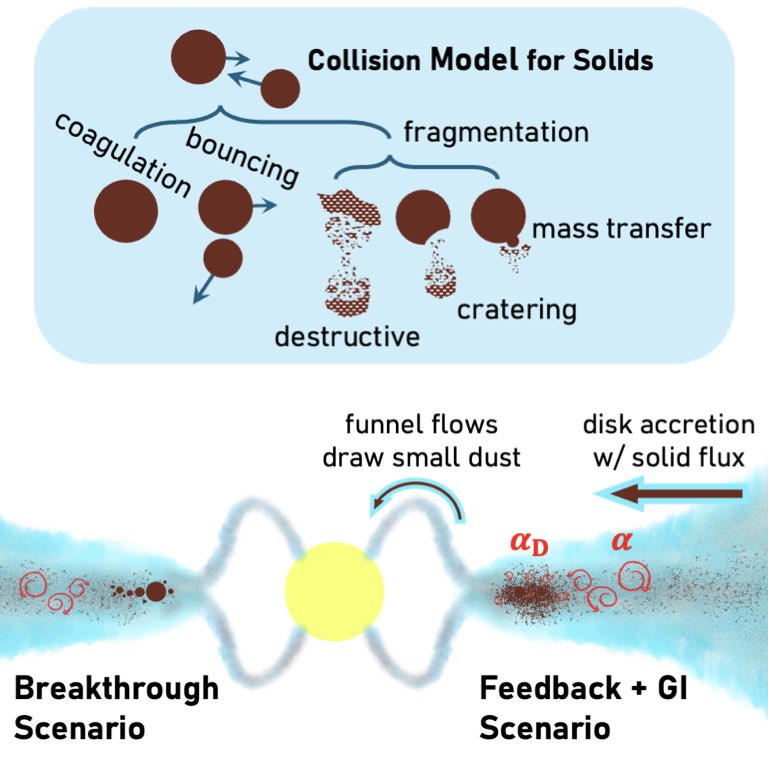Overview
I am broadly interested in theoretical topics on planet formation and astrophysical dynamics.
- My research uses simulations to address how rocky bodies and planetary objects form, grow, and interact with circumstellar disks, ultimately assembling diverse planetary systems.
- I have also conducted research in high-energy astrophysics, focusing on binary black holes embedded in AGN disks, drawing connections between them and gravitational wave sources.
- Through my work, I make observable predictions to test underlying theories and explore further applications to astrophysical problems.
Topics of Recent Interests

Planetesimal Formation and Demographics
The first crucial step in planet formation is the aggregation of dust grains into super-km sized planetesimals in protoplanetary disks. I have led a series of computational studies on the formation of planetesimals, as well as their initial mass/size distributions. For the first time, these studies received direct observational support from the Solar System, leading to major advances in our understanding of the early stages of planet formation.
Seleted Publications: Li, Youdin, & Simon 2019; Li & Youdin 2021; Nesvorný, Li et al. 2019, 2021; Gerbig & Li 2023, etc.

Dynamical History of Planetary Systems
Recent observations have revealed that practically all close-in sub-Neptunes form in mean-motion resonant chains, most of which unravel on timescales of 100 Myr. Using N-body simulations, I showed how planetary collisions resulting from the destabilization of resonant chains produce the distribution of orbital periods observed among mature systems, focusing on the post-instability resonant fine structures and transit time variation phases.
Seleted Publications: Li, Chiang, Choksi, & Dai 2024; Dai et al. (incl. Li) 2024.

Binary Black Holes Embedded in AGN Disks
Stellar-mass binary black holes (BBHs) embedded in AGN disk are promising progenitors of BBH mergers detected in gravitational waves by LIGO/Virgo/KAGRA, as this channel offers deep potential for multi-gen mergers, abundant compact objects, and potential asymmetric features. I pioneered simulating the orbtial evolution of embedded BBHs, covered an extensive parameter space, and identified key physical elements and parameters that harden the orbits of BBHs.
Seleted Publications: Li & Lai 2022, 2023, 2024.

Planet Formation near the Inner Disk Edge
Short-period super-Earths, the most common type of exoplanet, challenge planet formation theory due to their tight orbits, lack of Solar System analogs, and insensitivity to host metallicity. I proposed that late dust trapping in a pressure bump from magnetospheric truncation in evolved disks could explain this. I developed a dust evolution code and demonstrated the feasibility of this formation pathway, broadening our picture of planet formation.
Seleted Publications: Li, Chen & Lin 2022, 2024.

Object-Disk Interactions: Accretion and Migration
Interactions between objects (e.g., planets, black holes) and accretion disks produce complex effects across scales, allowing me to explore various aspects with students. In two student-led papers, we showed that accretors can reverse the direction of Type-I migration through positive angular momentum flux in the disk, and that circumplanetary disks (CPDs) only form around massive planets in cooler, thinner protoplanetary disks, explaining the rarity of observed CPDs.
Seleted Publications: Laune, Li, & Lai 2024; Sagynbayeva, Li et al. 2024.